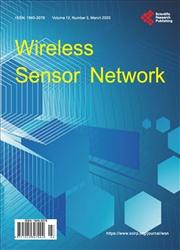Investigation and Implementation Ultra-Low Power PIC-Based Sensor Node Network with Renewable Energy Source and Decision-Making Unit
引用次数: 1
Abstract
Advancing technology has enabled the production of smaller, more energy efficient and cheaper electronic components. Therefore, previously existing many computer and electronics science-engineering ideas have become feasible. One of them is the technology of wireless sensor networks (WSNs), which has become the realization of the necessary technical requirements applicable today with low energy consumption. First, the sensing tasks and the potential sensor networks applications have explored, and reviews of factors influencing the design of sensor networks have provided. Then, the communication architectures for sensor networks have been outlined. PIC-based microcontrollers have used in the design of the sensor nodes. The design of the sensor node has supported with ultra-low power nanowatt technology for very low-cost design. Processing, memory and wireless communication units have integrated on to the sensor nodes and sensors to be used in the designed system which have allowed to be connected to any kind of sensor node. The designed sensor node’s operating system has written with the PIC C language, and PIC operating system has allowed different features such as measuring humidity, temperature, light sensitive and smoke sensor. Computer software has developed for data that can be recorded and monitored from a central location. Decision-making unit has created in the software algorithm and hardware modules for the implementation of decisions taken by the developed sensor nodes. Developed PIC-based sensor nodes have supported a unique voltage unit with renewable energy sources such as solar panel, rechargeable battery, and supercapacitor for energy production and saving. The results of this study are expected to be helpful for the development of WSN especially with renewable energy sources.基于超低功耗PIC的可再生能源与决策单元传感器节点网络的研究与实现
先进的技术使生产更小、更节能、更便宜的电子元件成为可能。因此,以前存在的许多计算机和电子科学工程思想变得可行。其中之一就是无线传感器网络(WSNs)技术,它已成为实现当今低能耗应用的必要技术要求。首先,对传感任务和潜在的传感器网络应用进行了探讨,并对影响传感器网络设计的因素进行了综述。然后,概述了传感器网络的通信体系结构。在传感器节点的设计中采用了基于pic的微控制器。传感器节点的设计采用超低功耗纳米瓦技术,实现了低成本的设计。处理、存储和无线通信单元已集成到传感器节点上,所设计系统中使用的传感器允许连接到任何类型的传感器节点。所设计的传感器节点的操作系统是用PIC C语言编写的,PIC操作系统允许测量湿度、温度、光敏和烟雾传感器等不同的功能。计算机软件已经开发出来,可以从一个中心位置记录和监控数据。决策单元在软件中创建了算法和硬件模块,用于实现所开发的传感器节点所做的决策。开发的基于pic的传感器节点支持独特的电压单元,具有可再生能源,如太阳能电池板,可充电电池和超级电容器,用于能源生产和节约。本文的研究结果有望为无线传感器网络特别是可再生能源无线传感器网络的发展提供参考。
本文章由计算机程序翻译,如有差异,请以英文原文为准。
求助全文
约1分钟内获得全文
求助全文

 求助内容:
求助内容: 应助结果提醒方式:
应助结果提醒方式:


